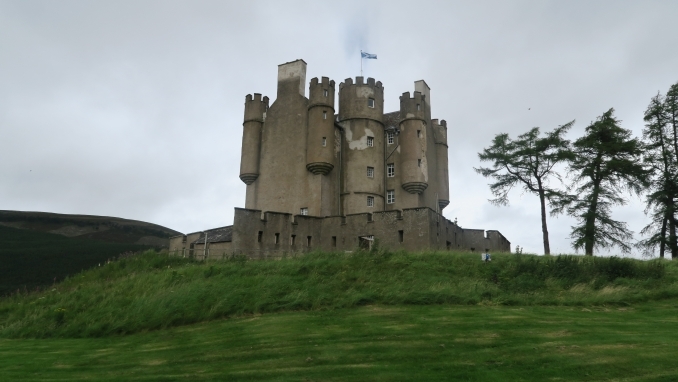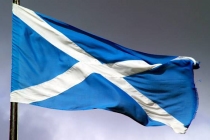Braemar Castle - Caisteal Bràigh Mhàrr

This is a castle built in 1628 by the earl of Marr and is seat of the Clan Farquharson. The castle is now leased to the local community and has witnessed an ongoing programme of restoration. It is open to the public and located close to the village of Braemar/ Bràigh Mhàrr off the A93 about fifty-eight miles west from Aberdeen.
Braemar Castle (Caisteal Bràigh Mhàrr) was once a stronghold of the Earl of Mar, Chief of Clan Erskine. It is situated near the village of Braemar (Scottish Gaelic: Bràigh Mhàrr) and the castle location, overlooking the River Dee (Scottish Gaelic: Uisge Dhè), would have given an ability to control important passes through the mountains of the Cairngorms. The building is a five storey L-plan castle with a star-shaped curtain wall of six sharp-angled salients, and with three storey angle turrets. It replaced an older royal castle, Kindrochit (Scottish Gaelic: Caisteal Ceann na Drochaid). Records show that a stronghold was established on the site of Kindrochit by King Malcolm III of Scotland in the 11th century. The remains of this castle can be seen in Braemar village.
In the 17th century the Earls of Mar were one of the most powerful political families in Scotland. It was the 2nd Earl, John Erskine, who built Braemar Castle. However, the lands and titles were lost by John Erskine, 6th (also known as the 23rd and 11th) Earl of Mar (1675 – May 1732). He had sided with Jacobite Rising of 1715 and fled to France after its defeat in 1716. His wealth, lands and titles were taken from him.
The Castle and lands eventually passed to the Farqhuarson's. John Farquharson, 9th Laird of Invercauld, fought as a Jacobite with the Earl of Mar in 1715 and was imprisoned. However, he was eventually granted clemency and was able to keep his lands and wealth. In 1732, he purchased the ruins of Braemar Castle, and filled the power vacuum left by the Earl of Mar. After the Jacobite rising of 1745 led by Charles Edward Stuart (Bonnie Prince Charlie) to regain the British throne for the exiled House of Stuart had failed. John Farquharson, who didn’t participate in the ’45 Rising, leased the Castle to the British Army.
The British Army moved into Braemar Castle in 1748 and used it as a base to enforce the Act of Proscription. That law had been passed after the disastrous defeat at the Battle of Culloden. The law banned the wearing of tartan and Highland dress, the speaking of the Gaelic language, the playing of the bagpipes as well as restricting the possession of weapons. The military finally vacated the castle in 1831. Subsequently Catherine Farquharson, who had inherited Invercauld estate from her father, undertook a refurbishment programme of the castle.
The Farquharson's and family used the castle until 2008. It is a possession of the chief of Clan Farquharson and is leased to a local charitable foundation and open to the public.
A stone is placed next to the roadside near to the entrance of the castle. This depicts "Colonel Anne" Lady Anne Farquharson-Mackintosh (1723–1784). She was the daughter of John Farquharson of Invercauld and was the wife of the chief of the Clan Mackintosh. Lady Anne supported the Jacobite cause. When Bonnie Prince Charlie raised his standard at Glenfinnan she helped gather over 350 Farquharsons and Mackintoshs to fight with the Clan Chattan Regiment in the Jacobite army.
Celtic nation:
- Scotland
Itinerary:
- Scotland Grampian
Place type:
- Castle










